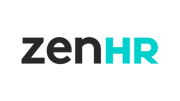
Objectives & Key Results “OKRs” are an agile goal-setting framework to drive transparency, alignment, and focus around your goals and strategy. Big corporations and high-growth companies like Netflix, LinkedIn, and Spotify use OKRs to align everyone around a common purpose and focus on what really matters.

Objectives and Key Results “OKRS” for HR Employees
Just to start, human resource (HR) professionals have many different areas of responsibility, such as employee engagement, hiring, and onboarding. Improving these areas can significantly impact the company’s overall performance. However, deciding where to begin and how to measure success could be tricky.
HR Objectives and Key Results “OKRs” help HR teams set structured and data-driven goals and help them achieve their desired results. It provides a framework for establishing human resource objectives, observing key results, and achieving goals within the HR department that impact organizational goals.
Keep in mind that Objectives answer the question “What do I want to achieve?” while Key Results answer the question “How do I know that the goal is achieved?”. Objectives should therefore be qualitative, easy to understand, and inspiring. Key Results should be clearly measurable and outcome-driven.
With that in mind, we have broken down some HR OKR examples by functional areas that you can use as inspiration or tweak and make them your own.
1. Recruiting & Talent Acquisition OKR Examples
Objective 1: Improve the recruitment process to increase candidate satisfaction
Key Results:
KR1: Reduce the average Time-to-Hire between application and offer to 20 days
KR2: 90% of hiring managers submit their feedback within 24 hours of the interview
KR3: Reduce time between application to first interview to 7 days
KR4: Decrease rejected candidate feedback time from 10 to 5 days on average
Objective 2: Research & improve best job advertising practices
Key Results:
KR1: Review competitor’s hiring campaigns and gather 3 insights we could use
KR2: Increase the average qualified candidates per advert from 10 to 15
KR3: Review 3 new candidate channels
2. Employee Onboarding OKR Examples
Objective 1: Research improvement opportunities for a better onboarding process
Key Results:
KR1: Interview 6 department heads about their current onboarding process
KR2: Interview 10 new joiners to collect feedback on the onboarding process
KR3: Research 5 competitors’ onboarding practices for different departments
Objective 2: Improve the new-hire onboarding process to ensure talent retention
Key Results:
KR1: Interview 7 team members about their own onboarding experience and what they would improve about it
KR2: Achieve an average onboarding satisfaction score of 8/10 points
KR3: 100% of new team members meet their manager and direct peers on the first day
KR4: 100% of new team members have their desks set up with welcome gifts on the first day
3. Employee Satisfaction & Retention OKR Examples
Objective 1: Improve internal employee job satisfaction
Key Results:
KR1: Interview 48 employees on ways to improve and implement suggestions
KR2: Ensure 100% of leavers participate in an exit survey and interview
KR3: Increase employee retention from 60% to 65%
KR4: Develop new career journey maps for 80% of employees by Q4
Objective 2: Increase employee engagement
Key Results:
KR1: Increase employee engagement survey score to 75/100
KR2: Increase eNPS to 60
KR3: Reduce absenteeism by 25%
KR4: Achieve a participation rate of 85% or higher
4. Learning & Development OKR Examples
Objective 1: Understand employees’ training needs and implement a training program
Key Results:
KR1: Interview 70% of employees to list the top 3 key competencies that need to be developed
KR2: Complete 3 key competency training sessions with an average score of over 80%
KR3: Follow up with all participants, and 70% feel more confident with work tasks
Objective 2: Design and launch an internal Employee development program
Key Results:
KR1: Ensure 80% of senior managers are enrolled in a mentor/coaching program
KR2: Development courses to be completed by all employees
KR3: Implement a ‘Future Leaders’ leadership development program
5. Organizational Culture OKR Examples
Objective 1: Make the company a desirable place to work
Key Results:
KR1: Increase our Glassdoor Culture & Values rating from 3 to 4+
KR2: Increase the number of employee referrals by 20%
KR3: Improve employee happiness pulse survey rating to 55% by Q3
KR4: Conduct 3 company culture events – all 95 employees attending
Objective 2: Optimize our employee benefits program
Key Results:
KR1: Research 5 competitors’ educational benefits programs for the employees
KR2: Secure a 70% employee satisfaction rate in annual surveys on compensation and benefits plan
KR3: Onboard mental health partner and enroll 50% of the staff
6. HR Compliance OKR Examples
Objective 1: Ensure effective compliance in the workplace
Key Results:
KR1: Research 5 HR software options with built-in compliance safeguards and select one to start using
KR2: Perform an HR compliance audit on 5 main areas
KR3: Resolve 90% of HR compliance-related complaints within 48 hours
How can ZenHR help you with OKRs?
Using a seamless HR software like ZenHR, you can define and track your HR team’s objectives and outcomes without compromising employee innovation. Through ZenHR, all your employees can create, monitor, and collaborate on their Objectives and Key Results (OKRs) directly with their managers. This creates a constant feedback loop that your employees want and guarantees you optimum performance and results.
Automate Your HR Processes Now

Amanee Hasan
Amanee Hasan is a Senior Content Writer at ZenHR, an award-winning and top-rated HR solution that offers world-class HR software services in the MENA region. Her main focuses are SEO, UX writing, copywriting, and creating content highlighting the latest HR trends, and gives organizations and individuals the tools they need to create successful work environments where people thrive.



